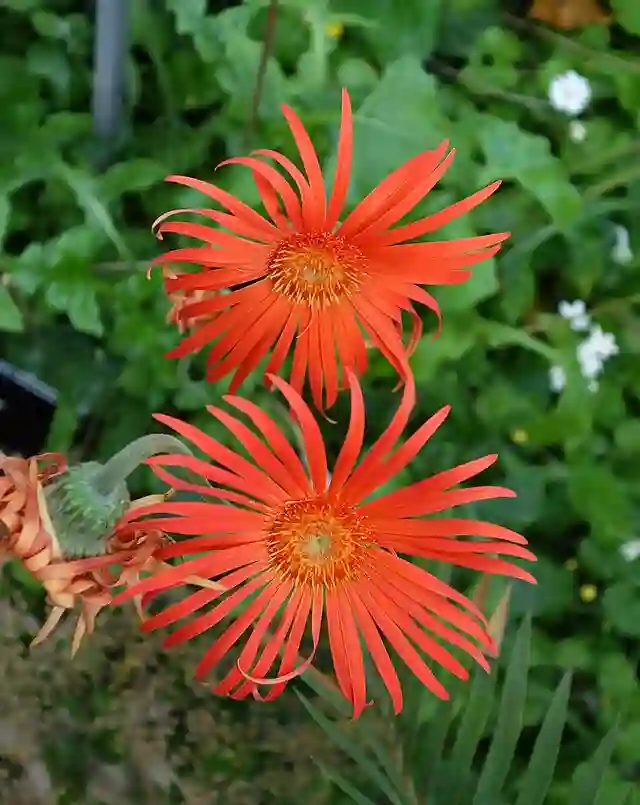
FAQs About Guava Tree
As someone who has dabbled in growing various fruit trees, I find Guava Trees particularly fascinating. They offer lush greenery, fragrant blooms, and delicious fruit. If you’re considering adding a Guava Tree to your garden or pot, you might have a few questions. Here’s a comprehensive guide based on my experiences and research.
78 Species in Genus Psidium
How to Grow a Guava Tree?
Growing a Guava Tree can be quite rewarding. Start by choosing a sunny spot in your garden, as Guava Trees thrive in full sunlight. The soil should be well-draining; guavas do not like “wet feet.” For best results, enrich the soil with organic matter like compost.
You can plant guava seeds, but growing from a nursery-bought seedling will give you a head start. If you choose seeds, soak them overnight before planting in a seed tray. Keep the soil moist but not soggy, and place the tray in a warm spot. Once the seedlings are strong enough, transplant them into their permanent location.
How to Prune a Guava Tree?
Pruning is crucial for maintaining the health and productivity of a Guava Tree. Prune your tree during the late winter or early spring before new growth starts. Remove any dead or diseased branches first. Next, thin out the interior branches to improve air circulation and sunlight penetration. This will help reduce the risk of fungal diseases and ensure a better fruit yield.
How Big Does a Guava Tree Grow?
Guava Trees can vary in size depending on the variety and growing conditions. Generally, they grow to about 10 to 15 feet tall. Some dwarf varieties stay around 4 to 6 feet, making them ideal for smaller spaces or container growing.
How to Grow a Guava Tree Faster?
To encourage faster growth, ensure your Guava Tree gets plenty of sunlight and water. Regularly fertilize with a balanced, all-purpose fertilizer to provide the essential nutrients. Also, avoid overwatering, as this can lead to root problems. Adding mulch around the base of the tree can help retain moisture and keep weeds at bay.
What Does a Guava Tree Look Like?
A Guava Tree is quite attractive with its dense, evergreen foliage. The leaves are typically oval-shaped and have a glossy texture. The tree produces small, white to pink flowers, which are quite fragrant. The fruit, which can be green or yellow when ripe, is round or oval with a slightly bumpy skin. Inside, the flesh ranges from white to pink, depending on the variety.
When Does a Guava Tree Bloom?
Guava Trees usually bloom in late spring to early summer. However, the exact timing can vary depending on the climate and variety. After blooming, the fruit takes a few months to mature. In warmer climates, you might even get a second flowering and fruiting cycle in the fall.
Are Guava Tree Roots Invasive?
Guava Tree roots are not typically invasive compared to some other trees. However, they can spread widely as the tree matures. It’s a good idea to plant guavas at a sufficient distance from structures or other plants to avoid potential root competition or damage.
Can a Guava Tree Grow in a Pot?
Yes, Guava Trees can grow in pots, especially dwarf varieties. Choose a large container with good drainage to accommodate the root system. Use a high-quality potting mix and ensure the pot has drainage holes. Regularly water and fertilize the tree, and be prepared to repot it as it grows.
How to Care for a Guava Tree?
Caring for a Guava Tree involves regular watering, especially during dry periods. Mulching helps retain moisture and suppress weeds. Fertilize every few months with a balanced fertilizer to promote healthy growth. Watch out for pests like scale insects and aphids, and treat them promptly with appropriate methods.
How to Propagate a Guava Tree?
Propagation can be done through seeds or cuttings. Seeds require a bit more patience, as they take longer to germinate. For cuttings, take a 6-inch segment from a healthy tree, remove the lower leaves, and dip the end in rooting hormone. Plant the cutting in a pot with a well-draining mix and keep it moist until roots develop.
What to Plant With a Guava Tree?
Guava Trees pair well with companion plants that have similar care needs. Herbs like basil and oregano can help deter pests. Marigolds are also great companions as they attract beneficial insects. Avoid planting with other trees that have aggressive root systems to prevent competition.
Is a Guava Tree Toxic?
No, Guava Trees are not toxic to pets or humans. The fruit is safe to eat, and the leaves are sometimes used in traditional medicine. However, it’s always wise to monitor pets around plants and consult a veterinarian if they ingest anything unusual.
Benefits of Growing a Guava Tree
Growing a Guava Tree offers numerous benefits. The fruit is rich in vitamin C and dietary fiber. The tree itself adds aesthetic value to your garden with its attractive foliage and flowers. Plus, it can serve as a natural air purifier.
Common Problems and Solutions
One common issue is fruit drop, which can be caused by inconsistent watering or nutrient deficiencies. Ensure regular watering and proper fertilization to reduce this problem. Another issue is fungal diseases; proper pruning and good air circulation can help prevent these.
By addressing these FAQs, I hope you feel more confident about growing and caring for a Guava Tree. Whether in a pot or the ground, a Guava Tree can be a delightful addition to your garden.
If i die, water my plants!



